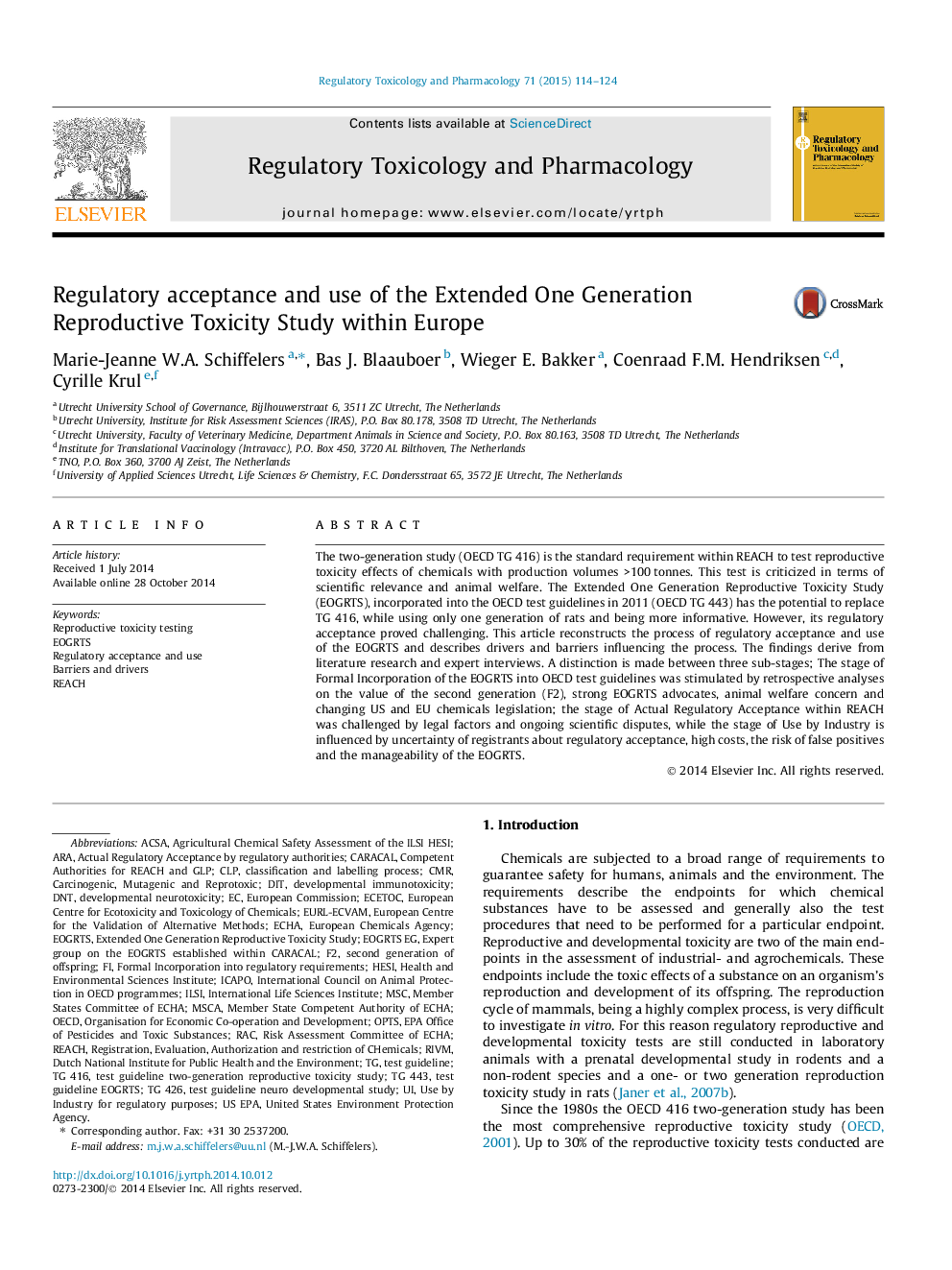| کد مقاله | کد نشریه | سال انتشار | مقاله انگلیسی | نسخه تمام متن |
|---|---|---|---|---|
| 5856637 | 1131979 | 2015 | 11 صفحه PDF | دانلود رایگان |
عنوان انگلیسی مقاله ISI
Regulatory acceptance and use of the Extended One Generation Reproductive Toxicity Study within Europe
ترجمه فارسی عنوان
پذیرش مقررات و استفاده از مطالعات سم شناسی باروری یک نسل در اروپا
دانلود مقاله + سفارش ترجمه
دانلود مقاله ISI انگلیسی
رایگان برای ایرانیان
کلمات کلیدی
ECHACARACALRIVMBarriers and driversReproductive toxicity testingILSIEOGRTSEURL-ECVAMECETOCDNTACSARACCMROECDMSCAMSCCLPUS EPA - EPA ایالات متحدهEuropean Chemicals Agency - آژانس مواد شیمیایی اروپاDIT - اینregistration, evaluation, authorization and restriction of chemicals - ثبت نام، ارزیابی، مجوز و محدودیت مواد شیمیاییARA - در حال حاضرtest guideline - دستورالعمل آزمونREACH - رسیدنOrganisation for Economic Co-operation and Development - سازمان همکاری اقتصادی و توسعهDevelopmental immunotoxicity - سمیت سلولی رشدیDevelopmental neurotoxicity - عصبی رشدیEuropean Centre for the Validation of Alternative Methods - مرکز اروپا برای اعتبار سنجی روش های جایگزینInternational Life Sciences Institute - موسسه بین المللی علوم زندگیHealth and Environmental Sciences Institute - موسسه علوم بهداشت و محیط زیستHESI - ها MarchesiEuropean Commission - کمیسیون اروپایی
موضوعات مرتبط
علوم زیستی و بیوفناوری
علوم محیط زیست
بهداشت، سم شناسی و جهش زایی
چکیده انگلیسی
The two-generation study (OECD TG 416) is the standard requirement within REACH to test reproductive toxicity effects of chemicals with production volumes >100Â tonnes. This test is criticized in terms of scientific relevance and animal welfare. The Extended One Generation Reproductive Toxicity Study (EOGRTS), incorporated into the OECD test guidelines in 2011 (OECD TG 443) has the potential to replace TG 416, while using only one generation of rats and being more informative. However, its regulatory acceptance proved challenging. This article reconstructs the process of regulatory acceptance and use of the EOGRTS and describes drivers and barriers influencing the process. The findings derive from literature research and expert interviews. A distinction is made between three sub-stages; The stage of Formal Incorporation of the EOGRTS into OECD test guidelines was stimulated by retrospective analyses on the value of the second generation (F2), strong EOGRTS advocates, animal welfare concern and changing US and EU chemicals legislation; the stage of Actual Regulatory Acceptance within REACH was challenged by legal factors and ongoing scientific disputes, while the stage of Use by Industry is influenced by uncertainty of registrants about regulatory acceptance, high costs, the risk of false positives and the manageability of the EOGRTS.
ناشر
Database: Elsevier - ScienceDirect (ساینس دایرکت)
Journal: Regulatory Toxicology and Pharmacology - Volume 71, Issue 1, February 2015, Pages 114-124
Journal: Regulatory Toxicology and Pharmacology - Volume 71, Issue 1, February 2015, Pages 114-124
نویسندگان
Marie-Jeanne W.A. Schiffelers, Bas J. Blaauboer, Wieger E. Bakker, Coenraad F.M. Hendriksen, Cyrille Krul,
